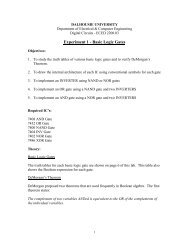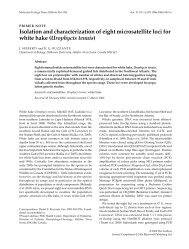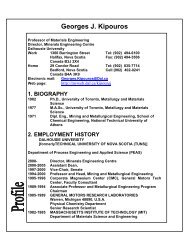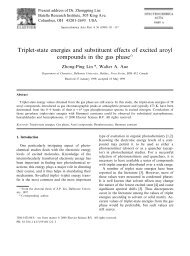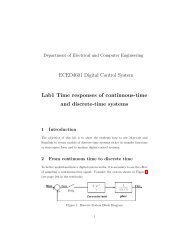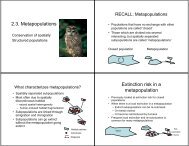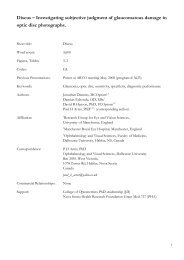Presentation notes: Vinci: Maja Jaakson - Myweb.dal.ca
Presentation notes: Vinci: Maja Jaakson - Myweb.dal.ca
Presentation notes: Vinci: Maja Jaakson - Myweb.dal.ca
Create successful ePaper yourself
Turn your PDF publications into a flip-book with our unique Google optimized e-Paper software.
P r e s e n t a t i o n n o t e s – V i n c i C h a p t e r 6 - P a g e | 6<br />
A good understanding of Kant’s theory of (perceptual) judgment, <strong>Vinci</strong> suggests, starts with<br />
understanding Kant’s position in relation to Locke’s theory of abstraction. Locke held that, having<br />
come across several particulars that resemble one another in some respect, the mind abstracts<br />
from these individuals and produces an idea. This idea is a picture; it is similar to its associated<br />
particulars, but stripped of the features that set them apart. These abstract ideas are kept in what I<br />
like to think of as a sort of mental rolodex. Every time the subject experiences sensations, the<br />
rolodex flips to the <strong>ca</strong>rd that matches up with the object sensed.<br />
While this theory seems prima facie plausible, it leads to serious problems. For instance,<br />
consider what Locke would take to be my abstract idea of a dog. This idea is supposed to resemble<br />
every dog, yet lack real dogs’ distinguishing features. But how <strong>ca</strong>n something be dog-like if it is<br />
without a particular shape, colour, size and length of coat? In fact, one would be hard-pressed to<br />
find something less dog-like than a shapeless, sizeless, colourless idea. Locke’s theory is<br />
problematic be<strong>ca</strong>use it is difficult to make sense of what the mental rolodex <strong>ca</strong>rds could possibly<br />
look like. 2<br />
Kant suggests we replace Lockean ideas with concepts. The concept of a dog is not a picture;<br />
instead, at B180, Kant says it is “a rule in accordance with which my imagination <strong>ca</strong>n specify the<br />
shape of an animal in general, without being restricted to any particular shape that experience<br />
offers me”(GW Critique 273).<br />
<strong>Vinci</strong> goes on to distinguish three things: the empiri<strong>ca</strong>l object (e.g. the dog as such),<br />
empiri<strong>ca</strong>l schema (which generates doggy pictures) and empiri<strong>ca</strong>l concept (under which every dog<br />
falls.) The empiri<strong>ca</strong>l concept of a dog produces judgments concerning the empiri<strong>ca</strong>l object, the<br />
actual dog. The empiri<strong>ca</strong>l schema of a dog, in turn, generates schematic objects; these are spatiotemporal<br />
pictures of dogs lacking the properties bestowed by the <strong>ca</strong>tegories (181). <strong>Vinci</strong> maintains<br />
schematic objects need not depend on real counterparts for their existence. For instance, pink<br />
2 For more on problems with Locke’s theory of ideas (and a non-Kantian solution to them), see Bolzano,<br />
Bernard. Theory of Science. Trans. Rolf George. Berkeley: University of California Press, 1972.



